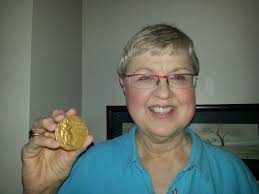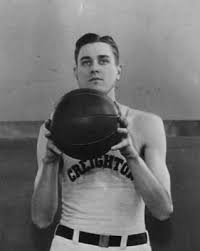The NBA Finals date back to 1947 (when they were known as the Basketball Association of America Finals) and the very 1st NCAA tourney was held in 1939. Olympic basketball competition is even older: it debuted as a demonstration event in 1904 and the men’s version became a medal sport in 1936, with the women finally getting their chance to go for the gold in 1976. The United States has dominated Olympic basketball competition from the start: the men have won 15 gold medals in the 18 tournaments they have participated in during the past 84 years, while the women have won 8 gold medals in the 10 tournaments in which they have competed during the past 44 years. Those of you who were looking forward to the 2020 Olympics opening ceremonies in Tokyo on July 24, 2020 will have to wait an extra 364 days, as the coronavirus caused a postponement until July 23, 2021. Due to the absence of college basketball since mid-March, HoopsHD’s Jon Teitel decided to fill the void by trying to interview as many prior Olympic players/coaches as possible so that you have something to read this summer while not watching the Summer Games. We continue our coverage by chatting with Connie Schweer (Willard’s daughter) and Rich Hughes (author of “Netting Out Basketball 1936″) about Willard Schmidt winning a gold medal in 1936.
 (photo credit: beatricedailysun.com)
(photo credit: beatricedailysun.com)
Willard was born/raised in Nebraska and despite not beginning to play basketball until his junior year he won back-to-back state titles at Swanton High School in 1927/1928: how was he able to have so much success so quickly after picking up the sport as a teenager? Connie Schweer: There was no competition! He was bigger than everyone else: 1 of his teammates was only 5’7”. He also worked on the farm but did not want to stay there forever. Rich Hughes: As John Wooden said, “You cannot coach height!” He wound up standing 6’9” and was probably 6’6” by the time he picked up the sport. 90 years ago there were other things going on: sports was not as preeminent as they are today. I suspect he had a big growth spurt and there were demands on kids back then to produce for the family.
What made him choose Creighton for college? CS: Scholarships. The coach at Swanton was instrumental in getting him a scholarship there. RH: I assume the proximity from Swanton to Omaha was a big factor.
He was 3-time all-MVC player and won the 1932 MVC title: what was his post-graduation plan? CS: They did not have pro basketball back then, just AAU, which is how he got to McPherson. His coach was AA Schabinger, who was involved with the National Basketball Coaches Association, who heard of opportunities in Kansas for my dad to pursue. That is where he met the guru: Gene Johnson. As long as he could play basketball and make money he would do that.
He was 1 of 6 members of the AAU Globe Refiners team who made the 1936 Olympic team: how big a deal was it at the time, and how fun was it for him to share the experience with his AAU teammates? CS: It was a fabulous experience for the entire town of McPherson, KS. The Globe Refinery had more oil than they knew what to do with so they used the team as a hook to sell oil. They had my dad check gauges atop tall tanks to strengthen his legs. The whole town followed the team. There is a mural outside the local gym to recreate the whole scene. People would take trains in the Dust Bowl area to watch his team play. Most of the guys were new to him but they had a wonderful time. He is mentioned in the book “The Boys in the Boat”: the rowing team thought they were tall until they met my dad! They sold tickets and played exhibition games to raise money to go to the Olympics. There was no guarantee that their jobs would be waiting for them when they returned so 1 guy with a newborn child decided not to go. RH: To a man they thought it was the best time of their lives. 7 of the 14 members of the Olympic team were from the Universal Pictures team and 1 guy was from Washington (Ralph Bishop). Another guy who was chosen (Vernon Vaughn) decided to keep working at the refinery rather than go to the Olympics: he had 3 kids and was not assured that he would have a job waiting for him when he returned. Willard was the guy who took Vernon’s spot and he enjoyed the opportunity. They had 8-9 days on a cruise ship each way where they could eat whatever they wanted and 3+ weeks in the Olympic Village featuring 37 different restaurants because Hitler went all out. Most ordinary Germans did not see a single egg during 1936 because they all went to the Olympians.
Your ancestors were from Germany: was it extra-special for him to play in Berlin? CS: Yes. His grandmother did not approve of him playing basketball until she learned that he would be going to Germany.
He did not even make the original team after losing in the finals of the Olympic trials, then after being added he stepped on a piece of tin and suffered a severe cut on his left heel that required 8 stitches: how close did he come to missing the Games? CS: He was afraid that he would not be able to play. I cannot even fathom how those tall guys squeezed into a car and drove to New York during 1 of the hottest summers on record. A couple of guys were in a car accident and broke their arms. When a doctor in New York told them how much it would cost to get the stitches taken out he decided to take them out himself! They were awed by the size of Madison Square Garden and had never seen pay toilets before. RH: That is why there was a 7-6 split between Universal Pictures and the AAU. He lacerated his foot during a shower around the 4th of July but it mended well. 1936 featured 1 of the biggest heat waves of all-time and you have to remember that this was before air conditioning. 2 of his teammates took a test drive, rolled the car that did not have seat belts, and they got concussions and arm lacerations. When they got to New York to get their stitches removed the price was too steep so Willard and the other player took their own stitches out!
The average height of the team was 6’5’’, which is why they were nicknamed “the tallest team in the world” and at 6’8” he was 1 of the 1st players to ever dunk a basketball in warmups: what impact did his size have either on or off the court? CS: It was inconvenient! It was hard to find clothes/shoes that would fit him. Getting into a car was not easy. I was 6’1” and I also recognize the difficulty.
What did it mean to him to represent his country, and what did it mean to him to win a gold medal? CS: He wrote my mother a letter describing the opening ceremony with the doves/Hindenburg. It was very special for him just to be there and meet so many people. A lot of these guys had never been out of their hometown so it was a revelation. There was no precedent because it was the very 1st gold medal so he was very proud of that. When they came back they would just pack everything up: Joe Fortenberry kept all of his Olympic keepsakes in his barn!
After contracting rheumatic fever in Colorado Springs and being hospitalized for 6 weeks he never played again and moved back to Kansas to coach basketball and play bridge: did he have any regrets about having his basketball career cut short? CS: He was playing for the Antlers hotel. They went to Nebraska for a short time and then moved to Kansas and married my mother. He felt fortunate about going to the Olympics but was very humble about it. He got to meet the President and he got to travel all over the country.
He passed away in 1965 but was posthumously inducted into the Nebraska High School Sports Hall of Fame in 2005: when people look back on his career, how do you think that he should be remembered the most? CS: He enjoyed sports and representing his country at the Olympics. He was a gregarious guy with a good sense of humor and was a good friend to all. RH: He provided frontcourt flexibility for the Olympic team: when Joe Fortenberry was hurt it was Willard who would fill in for him. There was a jump ball after every basket back then: the AAU team estimated that they controlled 9 out of 10 tips! Late in games they could come up with a 12-0 run by scoring on offense and their “defense” would consist of controlling the tip.
For more info about the 1936 US Olympic team check out “Sporting Labor in the Hollywood Studio System: Basketball, Universal Pictures, and the 1936 Berlin Olympics” by Professor Alex Kupfer at: https://cinema.usc.edu/spectator/35.2/2_Kupfer.pdf and “Netting Out Basketball 1936” by Rich Hughes at: www.amazon.com/Netting-Out-Basketball-1936-Remarkable/dp/1770679707


